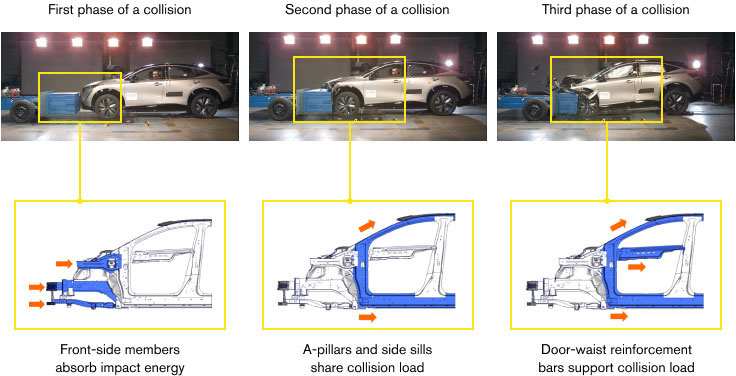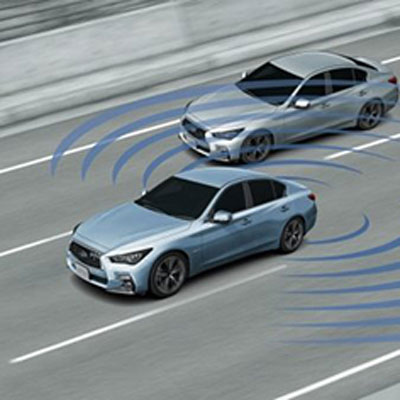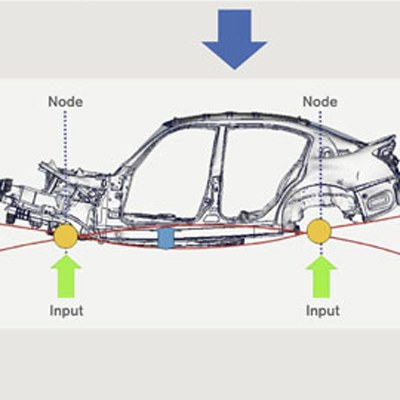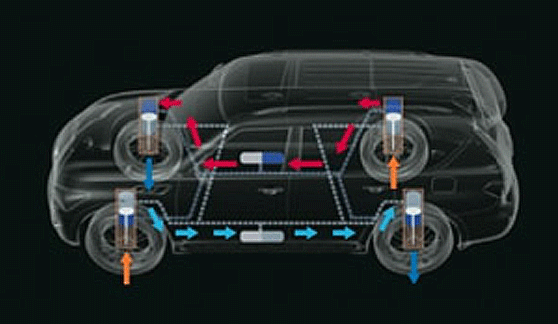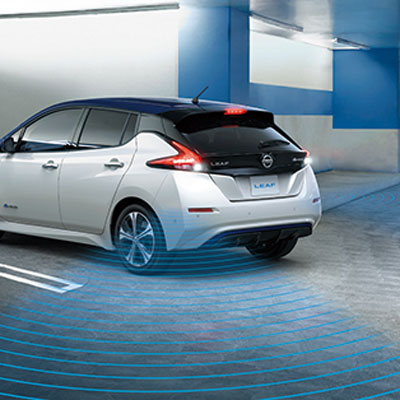Zone Body Structure
Reinforced cabin and crushable zones enhance safety
In the event of a collision, the Zone Body absorbs the impact with the Crashable Zone (impact-absorbing body) and protects passengers with the Safety Zone (high-strength cabin).
In addition, in anticipation of collisions with pedestrians, the Zone Body is designed to reduce injuries to pedestrians by improving the energy absorption of the hood and bumpers. The zone body is both strong and gentle.
Since its debut on the March/Micra in 2002, Nissan has worked to evolve the zone body structure to continually enhance occupant protection in the event of a collision while also reducing damage to other vehicles and pedestrians.
During a collision, the zone body construction is designed to protect vehicle occupants by having crushable zones that help absorb impact energy and a reinforced passenger cabin — or safety zone — that resists deformation. The energy-absorbing properties of the hood, fenders and front bumper also reduce pedestrian injuries and damage to other vehicles.
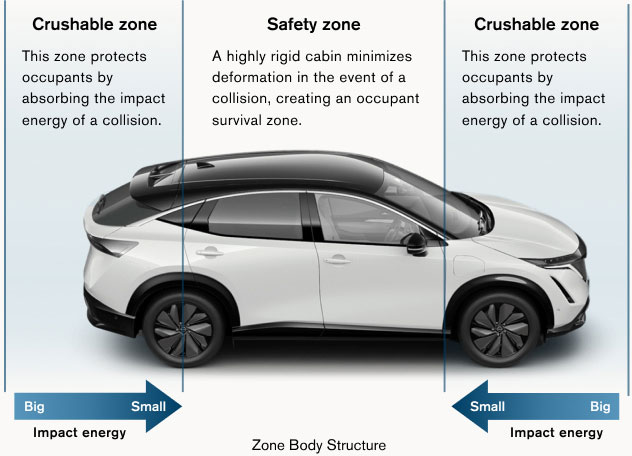
Crushable zone evolution
The crushable zones improve the efficiency of collision energy absorption by utilizing a large bumper reinforcement to disperse impact and a trident structure to firmly support the straightened front-side members.
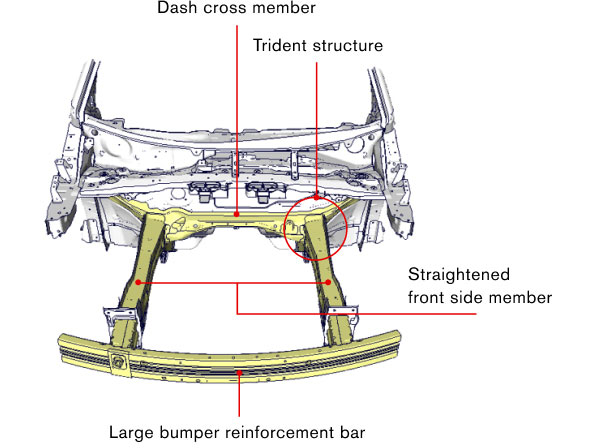
Safety zone evolution
The trident structure of the front-side member support, the multi-frame structure consisting of on-floor members and tunnel members, and the door-waist reinforcement all work to disperse the impact energy and support the load, enabling the safety zone to better protect its occupants.
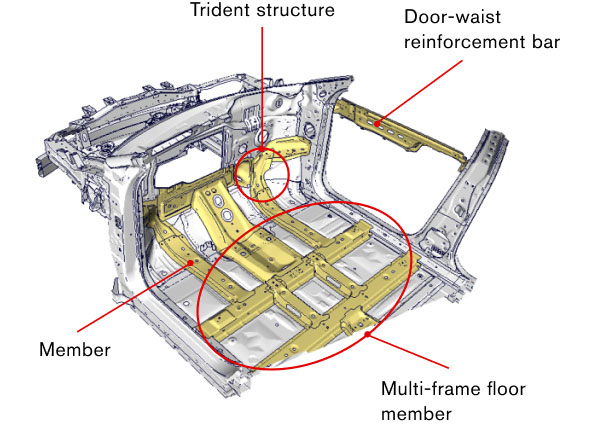
Mechanisms of the evolved zone body
